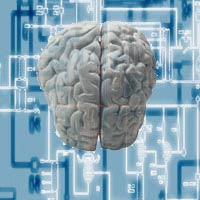GG) General Comment on Aging and Male FertilityThe article below highlights new information regarding the gradual decline in male fertility as opposed to the more sharper onset in females. Even healthy younger individuals in their early 20's have surprisingly highg numbers of sperm with decreased motility with the passage of time. My question is what is the origin of the decrease in motility in these younger individuals that are supposedly in their prime and showing no other outward signs of aging? Is it due to damage accumulation? Are reproductive cells more sensitive than other tissues to damage? Could the signals of the germline stem cells that Kenyon refers to have some effect on the male gametes?
The bolding is mine.
---------------------------------------------------------------------------------
Feb 2003
New study of healthy men finds semen quality decreases with ageBerkeley - With each passing year, semen quality in adult men declines, suggesting that
age plays a greater role in male fertility rates than previously thought, according to a new study by researchers at the University of California, Berkeley, and Lawrence Livermore National Laboratory.
The study, published Thursday, Feb. 6, in the journal Human Reproduction, suggests that even healthy men may become progressively less fertile as time goes by.
"Prior studies on semen quality typically included men who came to fertility clinics," said Brenda Eskenazi, professor of epidemiology and maternal and child health at UC Berkeley's School of Public Health, and co-author of the study. "
This is one of the first studies to focus on men with no known fertility concerns, giving us a better sense of whether age affects semen quality in a healthy population."The researchers recruited 97 men between the ages of 22 and 80 who were employed or retired from Lawrence Livermore National Laboratory. Samples were brought to the onsite research laboratory within two hours after collection to accurately measure sperm motility - its liveliness and direction of movement - and other indicators of semen quality. The researchers gathered extensive medical, lifestyle and occupational exposure history from the men, and excluded those who had smoked in the prior six months or had other relevant health problems.
While age had an effect on semen volume, the more significant impact was on
sperm motility, which researchers found
decreased by 0.7 percent per year. That means the chance of sperm motility being clinically abnormal is 25 percent at age 22, 40 percent by age 30, 60 percent by age 40 and 85 percent by age 60.
"Simply put, sperm slow down with age," said study co-author Andrew Wyrobek, head of the Health Effects Genetics Division at Lawrence Livermore National Laboratory. "
In addition, age impacts progressive motility, which is the ability of sperm to move forward with a clear goal in mind. Sperm that swim around in circles may get trapped in the female mucosa, while sperm that moves in a linear direction will have a greater chance of colliding with the egg."
Progressive motility started to decrease in men in their 20s by 3.1 percent per year. By age 30, the probability of progressive motility being clinically abnormal is about 50 percent, gradually increasing to 82 percent by age 80.
Unlike the female biological clock - which reflects a marked decline in fertility in a woman's mid-30s -
the male clock proceeds gradually, the researchers found.
The decreased fertility associated with maternal age has been well established, but understanding the effects of paternal age has become increasingly important. Over the decades, more and more men are having children at older ages. Since 1980, there has been a 24 percent increase in men aged 35 to 54 fathering children.
But research has also indicated that older men take longer to conceive than their younger counterparts. One study of 8,515 planned pregnancies found that men older than 35 have half the chance of fathering a child within 12 months compared with men younger than 25, even when the age of the mother is considered.
The study by UC Berkeley and Lawrence Livermore helps shed light on why paternal age matters.
"Women tend to be the focus in fertility issues," said Eskenazi. "What we are saying is that men are not scot-free in this. Many of us have heard of men in their 70s and older who have kids, but the probability of that happening may be lower than we thought."
The authors said that
changes in semen quality with age may be due to various physiological factors, including age-related narrowing and sclerosis of the testicular tube, degeneration of germ cells, and normal changes in the prostate, or to increased probability of exposure to disease or environmental agents. "We considered time worked at Lawrence Livermore and occupational exposure in our study, and found no evidence that they affected semen quality," said Eskenazi.
The authors note that semen quality is considered a proxy for fertility, indicating that men who wait until they are older to have children are risking difficulties conceiving.
"Of course, age is just one of many factors to consider when having a child," said Wyrobek. "We want couples to be informed when making their decision."
###
Other co-authors of the study are Sharon Kidd, Lee Moore and Suzanne Young from UC Berkeley's School of Public Health; and Eddie Sloter and Dan Moore from the Biology and Biotechnology Research Program at Lawrence Livermore National Laboratory.
The study was funded by a grant from the National Institute of Environmental Health Sciences, part of the National Institutes of Health.
Edited by kperrott, 18 March 2003 - 04:30 PM.












































